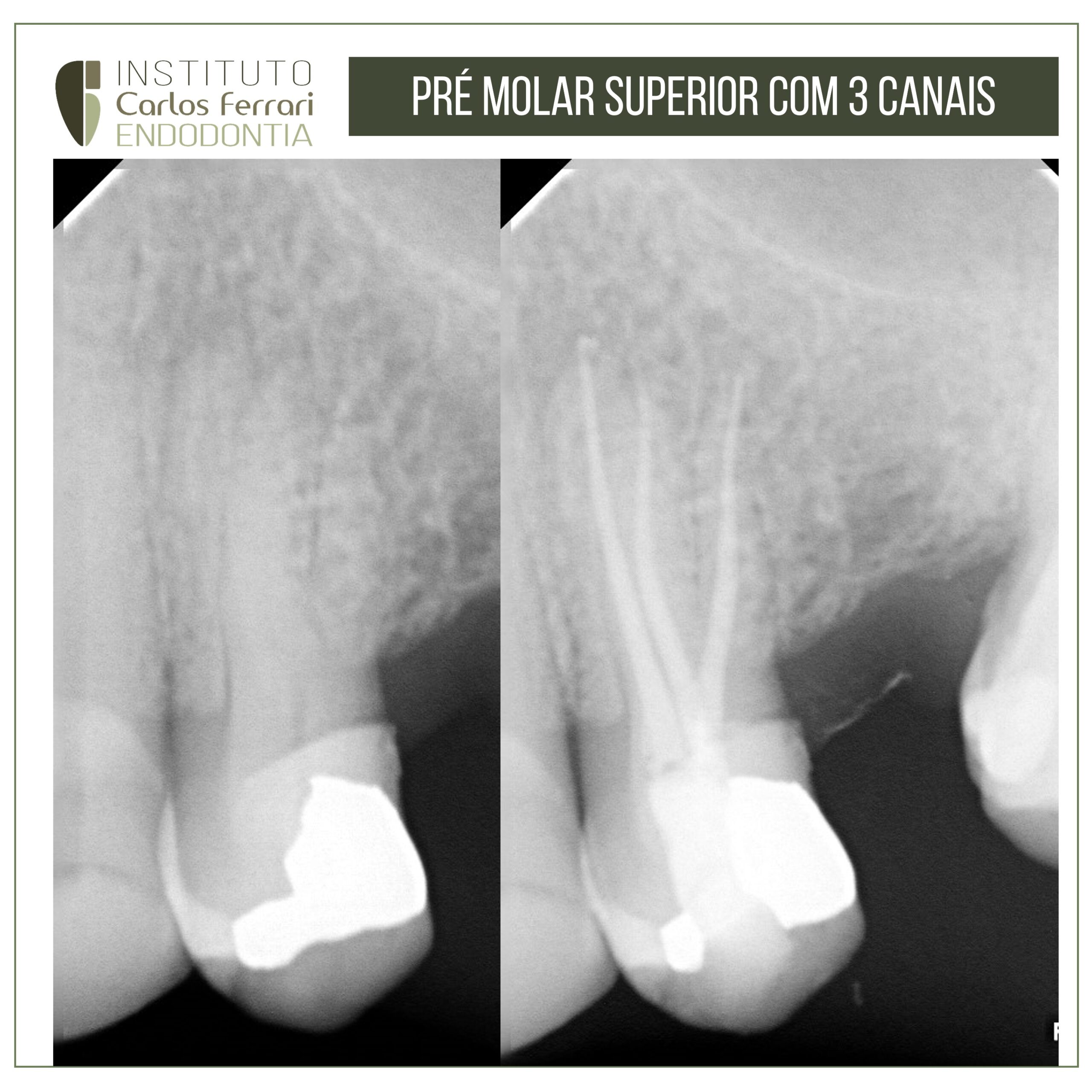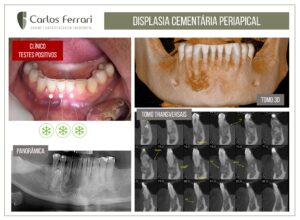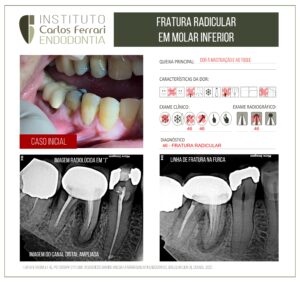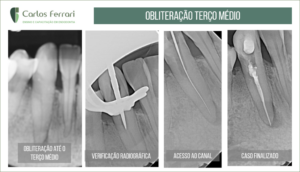Upper pre-molar with three roots and three canals, made by fellow endodontist Igor Fajan, a former student of our specialization course in endodontics at APCD Bragança Pta.
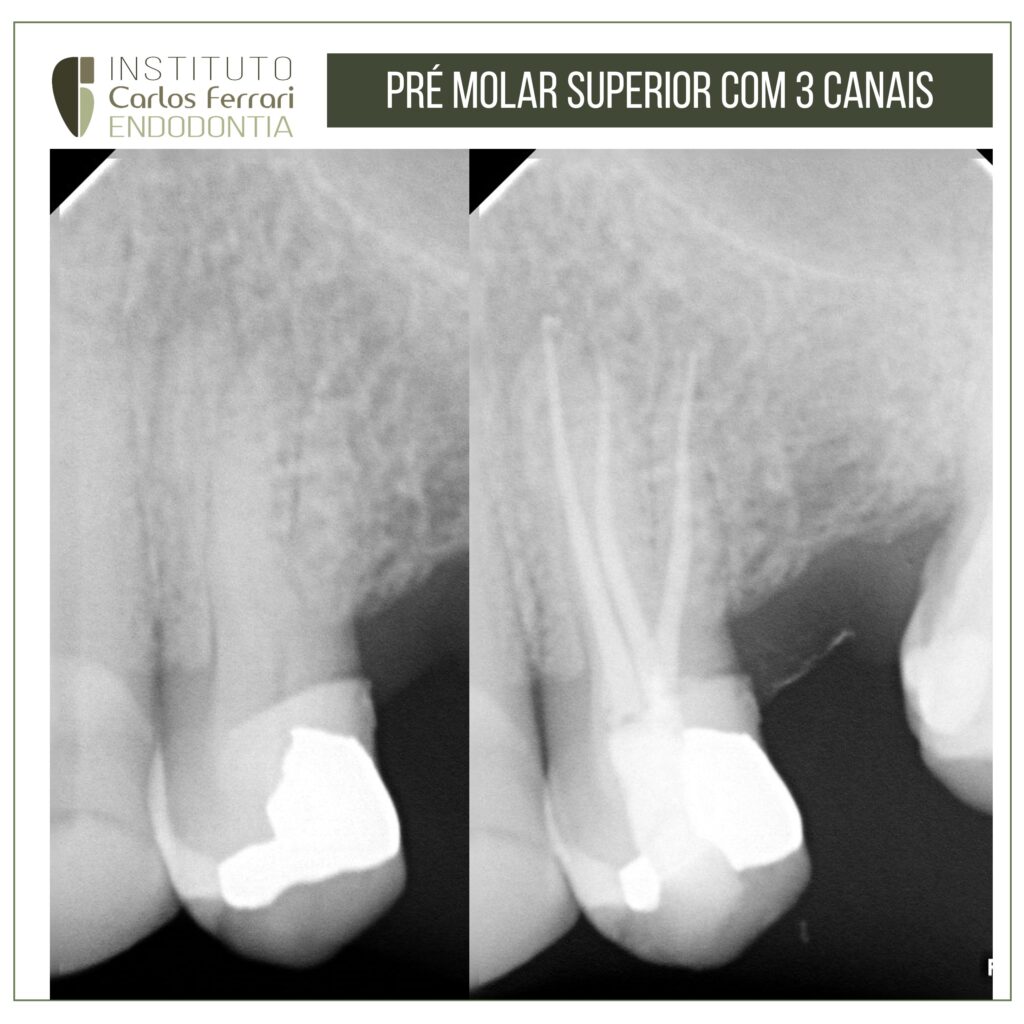
In: Machado, Ricardo. Endodontics: Biological and Technical Principles. Available at: GEN Group, GEN Group, 2022.
Upper premolars
These are the teeth that present more anatomical variations considering the number of roots and canals (Figure 9.18) and the location of bifurcations (cervical, middle or apical third), which are more common in the first ones (Figure 9.19). When there are two roots/roots, one will be vestibular and the other palatal. In the case of three roots/channels, they will be mesiobuccal, distovestibular and palatal(a).
The more apical the bi/trifurcation, the more difficult the location of the canals. If the tooth has a root, the canal tends to be wide in the buccal-palatal direction and narrow in the opposite direction (mesiodistal). In these cases, special attention should be given to instrumentation, trying to touch all walls as much as possible. Upper premolars can also contain isthmus. 54 Additional strategies should be adopted for cleaning these areas.
When there are two roots, there are usually small apical curvatures. The apical portion of the buccal root faces the palatal and the apical portion of the palatal root faces the buccal. In many situations, these curvatures are not visualized radiographically. Considering this fact and the small volume of the buccal root at the apical level, excessive instrumentation amplitudes can cause canal-shaped perforations.
Maxillary premolars with a single root and two canals can present one or two foramen, a fact associated to the shape of the apexes: if the apex is tapered, the canals tend to end in the same foramen; if it is wide, the canals probably will have distinct apical foramen.
In 2010, Jayasimha Raj and Mylswamy52 investigated the root canal morphology of 200 maxillary second premolars extracted from a population in India, which were stained and diaphanized for stereomicroscopic analysis. According to the results of the study, 64.1% of the teeth had single canals and 35.4% had two canals. The mean length was 21.5 mm. Isthms and apical deltas were found in 19 and 14% of the teeth, respectively.
In 2012, Zeng et al.57 evaluated the presence and characteristics of root curvatures in 200 maxillary first premolars of adolescents of both genders (100 males and 100 females) from Guangdong Province (China). After opening, K-type instruments were inserted into the root canals up to the foraminal exit. Subsequently, periapical radiographs were taken in both directions (mesiodistal and buccolingual) and the angles of the curvatures were determined by applying the Schneider method58. The results of the study showed that i) 59.21% of the roots were curved in the buccolingual direction, and were present in 49.74 and 68.98% of male and female patients, respectively; ii) 41.05% were curved in the mesiodistal direction, being present in 36.27 and 45.99% of male and female patients, respectively; iii) 6.84% presented S-shaped curvatures, of which 4.15 and 9.63% were present in teeth of male and female patients, respectively, and; iv) the curvatures of female patients' palatal canals were more pronounced in both directions than those in the same canals of male patients. According to the conclusions of the study, curved root canals in maxillary first premolars can occur in both directions (mesiodistal and buccolingual), or even present double curvature (S-shaped). The incidence of curved canals was higher in female patients.
Al-Ghananeem et al. in 2014 evaluated the number of roots and root canals of maxillary second premolars from a population in Jordan. Two hundred and seventeen patients (100 female [46%] and 117 male [54%]) had their upper second premolars treated endodontically between January 2012 and January 2014. The mean age of the patients was 32.7 years, ranging from 18 to 60 years. The teeth included in the study were examined clinically and radiographically to analyze the number of roots and canals. According to the research results, 120 and 96 teeth had one and two roots, respectively. One tooth had three roots. Considering the configuration of the root canals, 30, 54 and 132 teeth presented single canals, two canals ending in a single foramen and two canals with distinct apical foramens, in that order. One tooth had three canals and three separate foramens.
Upper premolar with 3 channels.


